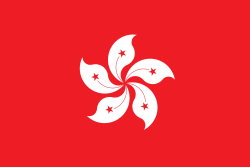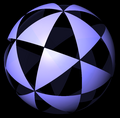In geometry, orbifold notation (or orbifold signature) is a system, invented by the mathematician William Thurston and promoted by John Conway, for representing types of symmetry groups in two-dimensional spaces of constant curvature. The advantage of the notation is that it describes these groups in a way which indicates many of the groups' properties: in particular, it follows William Thurston in describing the orbifold obtained by taking the quotient of Euclidean space by the group under consideration.
Contents
- Definition of the notation
- Good orbifolds
- Chirality and achirality
- The Euler characteristic and the order
- Equal groups
- Two-dimensional groups
- Correspondence tables
- Spherical
- Euclidean plane
- Hyperbolic plane
- See also
- References
- External links
Groups representable in this notation include the point groups on the sphere (), the frieze groups and wallpaper groups of the Euclidean plane (), and their analogues on the hyperbolic plane ().



































































